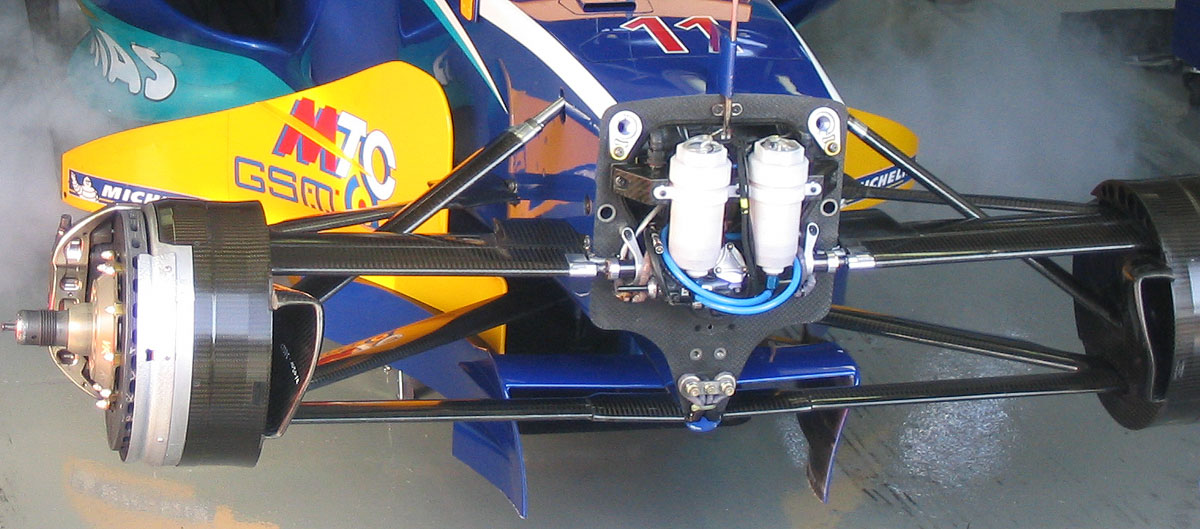i need to know please if this part, that is attached to the keel or the cockpit for the upper one, move or not ? and if it moves how much bigger is the whole that it get into it ?



The word flexing would be very wrong. The suspension arms don't flex (significantly), the push rod pushes on the rockers. Most the movement comes from the rotation of the rocker in the nose.Dragonfly wrote:I'd use the word "flexing" rather than "moving".
I suspect he's referring to the fact that modern F1 cars all use "flexure joints" where the A-arms connect to the chassis. The arm itself is essentially inflexible - but there is a very carefully engineered piece of flexible carbon that attaches the arm to the chassis. It functions much the same as a standard rod end joint - but it's lighter and stronger, as well as having very little friction.beelsebob wrote:The word flexing would be very wrong. The suspension arms don't flex (significantly), the push rod pushes on the rockers. Most the movement comes from the rotation of the rocker in the nose.Dragonfly wrote:I'd use the word "flexing" rather than "moving".
The A arms then simply rotate around fixed points.
You are quite right. That is what I referred to.Scootin159 wrote: ............................
I suspect he's referring to the fact that modern F1 cars all use "flexure joints" where the A-arms connect to the chassis.
I'd argue that they are kinematically difficult to use with their effective "joint centres" moving around with different loads.riff_raff wrote: F1 A-arms use flexures at the attachment to the chassis because the flexures provide consistent and predictable kinematic characteristics.
The wheels all have the ability to move up and down, that's the point of the suspension. If the upper and lower wishbones were fixed and unable to flex, you may as well not bother with any of the other suspension parts because either your wishbones are going to break or you are going to have no suspension travel. The question I believe you are asking is how much travel is there in F1 suspension, the answer is not at all a lot. Of the order of millimetres. More than that and your low speed performance will be terrible.firasf1dream wrote:aha well what i was talking about are the higher and the lower wishbones, i needed to know if they move, so the picture and you guys acknowledged that it moves, what i need to know is if the whole that this wishbone goes threw is big ? because i assume it's not which make it less movable
and please i need to know if you have any pictures for the Keel of the mclaren MP4-27 and how is the wishbones attached in it ?
For the front tyres, your are correct, Richard, but not for the rears.richard_leeds wrote:As I recall, a significant amount of the vertical travel takes place in the tyre walls.
Forgive me, but I can't think that is true. The vertical stiffness of both Pirelli tyres was greater than the Bridgestone's they replaced, particularly for the rear tyres. The evidence is can be found here, extracted from an earlier post.richard_leeds wrote:That came to light with the switch to Pirelli, some teams struggled to model the tyre wall so had to run higher ride heights with sub-optimal suspension settings to compensate. Hence McLaren's porpoising in the last two years.
As a cynic, I would expect that most F1 teams would simply increase spring stiffnesses..... to get "better" control over aero...richard_leeds wrote:If they switched to low profile tyres then we'd see more movement in the suspension. I guess the engineers would prefer that because they would have more influence on the behaviour, at the moment they're stuck with standard tyre walls.